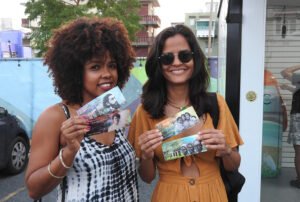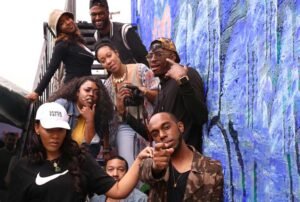
March 3, 2019; Hyperallergic
The Museum of Contemporary Art Cleveland (MOCA) announced they will offer free admission to all starting March 16th, as part of an initiative to invite diverse audiences to the museum and reduce barriers to engagement.
This “Open House” initiative is funded by a grant from the Carl & Marilynn Thoma Art Foundation called “Bold Initiatives,” which aims to support “diversity and inclusion.” The initiative and related programs are also supported by several other foundations, including the Cleveland Foundation and PNC.
MOCA celebrated its 50th anniversary in 2018 and is undertaking what Executive Director Jill Snyder said is comprehensive approach to improving the museum’s outreach to community. Snyder, who engineered a turnaround for MOCA in the early 2000s, has led the museum for over 20 years. She told ArtNews,
We are looking to have inclusion permeate our entire structural and programmatic approach to the museum. We are taking what we hope is a noble approach that has a high quotient of humility, which is that we are really listening to what is going on in our community and looking structurally at our organization, meaning the staffing, the ways in which we are defining visitor engagement, and also through our programmatic choices.
Sign up for our free newsletters
Subscribe to NPQ's newsletters to have our top stories delivered directly to your inbox.
By signing up, you agree to our privacy policy and terms of use, and to receive messages from NPQ and our partners.
Open House also includes mentoring programs based on the diversity ratio of Cuyahoga County, family-friendly programming at the museum, and a new education specialist.
“I’m not aware of any institution that is approaching this as comprehensively as we are, as simultaneously,” said Snyder. That’s perhaps less than humble, since any number of institutions have begun to address longstanding issues of cultural exclusion and appropriation seriously and creatively. Snyder might, for instance, look at the nearby Cleveland Museum of Art (CMA), which last year initiated a new strategic plan based around inclusion and equity and has offered free admission since 1913. CMA’s pilots were funded by the Walton and Ford Foundations’ collaboration around funding for greater diversity in museum staff, which was announced in 2017. CMA hired their first black curator that year.
Museums have some of the worst diversity ratios in the nonprofit sector, with leadership that is over 90 percent white. This imbalance spills into issues as broad as who feels welcome coming into the museum, what art is considered worthy of preservation and display, the cultural narratives and values perpetuated by public institutions, and how a museum deals with questions of ownership and repatriation. Cleveland’s population is 50 percent black and less than 40 percent white.
Museums across the US have been attempting to improve through community outreach programs, fellowships and mentoring opportunities, free admission, and other forms of creative public outreach. Since no major art museums have yet achieved anything like community representation among leadership, it’s hard to say what the magic formula will be, but what many museum activists are looking for right now is diversification of the curatorial and other substantive intellectual leadership positions in these institutions.—Erin Rubin
This newswire has been changed from its original form to clarify when we are making conclusions about the museum sector and when we are making conclusions about MOCA.













